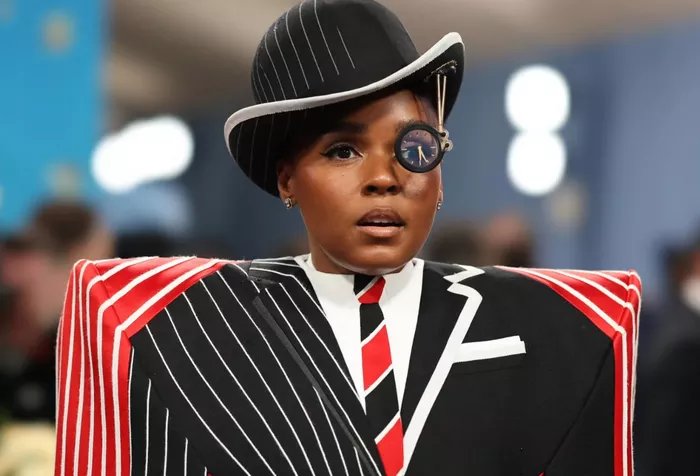At DALYA, a women’s haberdashery located on Sullivan Street in Soho, tailored suits line the store like carefully curated film stills. Each angled mirror reflects more than a fitting—it captures a moment of transformation. Clients arrive seeking structure and identity, and the shop delivers both, offering personalized suiting as a form of visual autobiography. DALYA is not just a store—it’s a thesis on self-presentation.
The so-called women’s power suit, often reduced to 1980s tropes—shoulder pads, pinstripes, and corporate armor—is rooted in a much deeper history. Its foundational energy stems not from boardrooms of the Reagan era, but from the defiant spirit of midcentury youth. As Monica L. Miller explores in Slaves to Fashion: Black Dandyism and the Styling of Black Diasporic Identity, “Black dandyism reveals the tension between being seen and being surveilled.” For Black women, that tension is intensified. Dressing up is never merely aesthetic—it becomes a revision of historical narratives.
The Black female dandy is deliberate. Her crisp tailoring, purposeful accessories, and curated image channel a rich, complex heritage. Miller defines this as a performance—a way to use “immaculate clothing, arch wit, and pointed gesture to announce their often controversial presence.” These are not simply fashion choices, but survival tactics and declarations of agency. In a world that has long controlled, misunderstood, or ignored Black female bodies, the tailored suit becomes a powerful reclamation tool.
Artists like Janelle Monáe embody this ethos. Her long-standing devotion to black-and-white suiting is often described as androgynous, but it operates far beyond gender fluidity. “The uniform kept me honest,” Monáe once said. “It kept me humble. It made me remember the working-class people who I came from.” Her tuxedos become metaphors—anchoring a larger dialogue on identity, resistance, and authenticity. In Monáe’s hands, the suit transforms into both a shield and an invitation, echoing her futuristic music and timeless message.
Today’s generation of Black women continues this legacy, using suits not out of necessity but as statements. At the 2023 Met Gala, Teyana Taylor stunned in a deconstructed Thom Browne outfit that blended Victorian strictness with Harlem Renaissance flair. Her look was a modern reinterpretation of past resistance, echoing the spirit of the zoot suit—once a bold declaration by marginalized men in urban America. In similar fashion, modern tailored ensembles on Black women challenge environments designed to make them invisible.
This idea of clothing as cultural memory is central to the work of fashion historian Dr. Jonathan M. Square, who sees style in the Black diaspora as “an embodied archive.” His project, Fashioning the Self in Slavery and Freedom, positions clothing not as decoration, but as documentation. Every seam and stitch is a story of survival, resistance, and transformation.
Shelby Ivey Christie, another prominent voice in Black fashion history, underscores how deeply this narrative runs. “Style is our first language,” she tweeted in 2021. “Before we speak, we show.” Her ongoing work traces the politics of luxury and how Black women use it to express identity and assert power in historically exclusive spaces.
According to Dr. Square, “Black people have used clothing not merely as protection or adornment, but as a critical technology of selfhood that allows for the articulation of identity under conditions designed to deny such possibilities.” When a Black woman chooses a custom suit over conventional feminine attire—carefully places a boutonnière on her lapel or knots a tie with practiced precision—she is not only getting dressed, she is engaging in radical self-fashioning.
These choices resonate in every context. In corporate settings, the Black female dandy’s presence disrupts entrenched notions of professionalism, long coded as white and male. In creative arenas, her tailored form nods to the history of gender performance and racial defiance. Even in everyday life, her style communicates what scholar Janell Hobson calls “a literacy of self-presentation”—a way to be deeply aware of history without being trapped by it.
What sets the modern Black female dandy apart from both her male counterparts and white female peers is how she navigates overlapping systems of oppression through aesthetic precision. Her fashion is both defense and declaration—a barrier against misinterpretation and a proclamation of identity. From the razor-sharp crease of her trousers to the slight angle of her fedora, her look is a visual argument about legitimacy, authority, and self-determination.
As Christie puts it, when Black women embrace suiting traditions historically linked to masculine power, they are not borrowing—they are redefining. “They’re reconfiguring the very language of fashion to speak to their specific experiences of race and gender,” she notes. This matters deeply because, as Miller explains, fashion has always been “a critical site for the negotiation of race, class, sexuality, and gender” for Black communities.
In this light, the emergence of the Black female dandy is not a trend—it’s a profound intervention. Her body becomes a site of scholarship, protest, and pride. Every accessory, every fabric choice, becomes part of a larger historical dialogue. In each detail—the polish of her shoes, the symmetry of her tie, the presence she commands—she continues a tradition of using style not just to survive, but to speak, challenge, and thrive.
Related Topics
- Empowering Futures: Local Women Unite Through Clothing Donations
- Kiya Tomlin to Be Honored with Prestigious WWR Impact Award for Empowering Women Through Fashion
- Joseph and James Sets New Standard for Australian Menswear at Fashion Week

